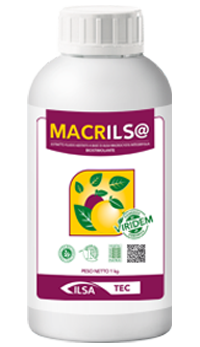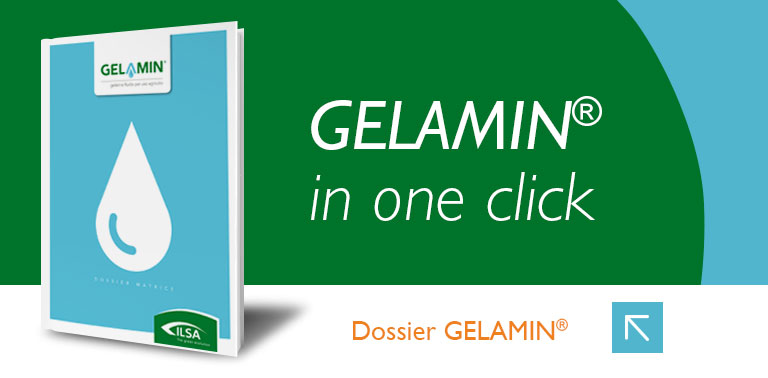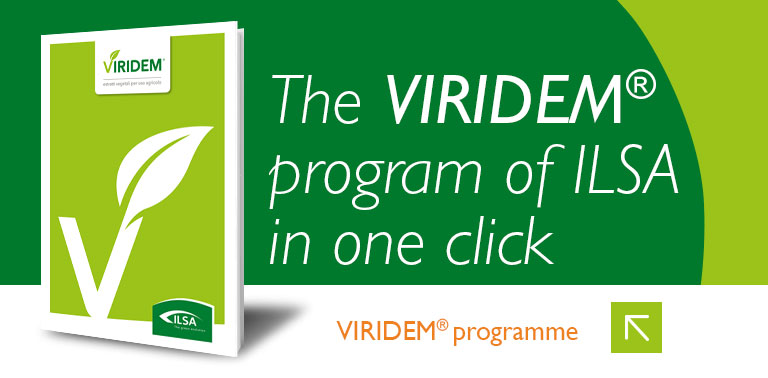MACROCYSTIS INTEGRIFOLIA SEAWEED-BASED NITROGEN FLUID EXTRACT
BIOSTIMULANT
MACROCYSTIS INTEGRIFOLIA SEAWEED-BASED NITROGEN FLUID EXTRACT
BIOSTIMULANT
What is it?
MACRILS@ is a liquid biostimulant from the vegetal matrix and is allowed in organic farming. The product is obtained through an innovative technological extraction process characterised by high environmental sustainability named Cold State Cell Disruption (CSCD®). Through the physical process, the Chilean seaweed of the genus Macrocystis (which spreads on the southern coast) is extracted. MACRILS@ is rich 100% in natural growth regulators, mannitol, alginates, vitamins, polyamines, bioactive molecules and nutrients.
What does it do?
The strong bio-stimulating action of each of the natural molecules contained in MACRILS@ makes it unique in the reference segment in comparison to other similar products. On one side, the natural growth regulators (gibberellins and auxins) have a "hormone-like" action with a positive and direct effect on the plant’s growth and vegetative-productive development (leaf and root systems and productive organs). On the other side, the vegetal biostimulant is rich in alginates and mannitol which have an ion-capturing action (e.g., Ca+) and consequent active transport within the various plant’s organs, currently underway formation and development (roots, meristematic apexes, flowers and fruits). The presence of vitamins (E and D), polyamines and natural amino acids have an antioxidant action to contrast free radicals and regulate plant transpiration by increasing resistance to osmotic, water and thermal stress. Finally, MACRILS@ has a positive effect on the new shoots, flowers, and fruits underway formation and development.
How is it used?
MACRILS@ could be applied by the foliar application during the main crop’s phenological stage – vegetative and swelling fruits – of vegetables, grapevine, fruits and ornamentals. MACRILS@ is characterised by perfect miscibility with other commercial products (fertilisers and chemical products) and therefore, can be used during foliar and pesticide treatments as well.
Chemical and physical features
- LIQUID BROWN COLOUR
- pH 4,5 ± 0,5
- DENSITY 1,11 ± 0,10 kg/dm3
- CONDUCTIVITY E.C. 1,50 ± 0,30 dS/m
COMPOSITION
- Water soluble Organic Nitrogen (N) 1,6 %
- Organic Carbon (C) 10,4 %
- Water soluble Potassium oxide (K2O) 2,0 %
- Gibberellins >6 ppm
- Auxins 0,3 ppm
Contains in particular
- MACROCYSTIS SEAWEED EXTRACT
Characterising substances
- MANNITOL AND ALGINATES, GIBBERELLINS AND AUXINS ARE 100% FROM THE VEGETAL SOURCE, VITAMINS, BETAINES AND POLYAMINES
ACTIONS OF THE CHARACTERISING SUBSTANCES
| Anti-stress and antioxidant | Hormone-like with positive action on vegetative development | |
|---|---|---|
| MANNITOL AND ALGINATES |

|

|
| GIBBERELLINS AND AUXINS ARE 100% FROM THE VEGETAL SOURCE |

|
|
| VITAMINS, BETAINES AND POLYAMINES |

|
Doses and methods of use of the fertilizer
-
Fruit
-
Blackberry1,5-2 kg/ha2-3 applications, every 7-10 days, in the vegetative stage and during fruit swelling
-
Blackcurrant1,5-2 kg/ha2-3 applications, every 7-10 days, in the vegetative stage and during fruit swelling
-
Blueberry1,5-2 kg/ha2-3 applications, every 7-10 days, in the vegetative stage and during fruit swelling
-
Raspberry1,5-2 kg/ha2-3 applications, every 7-10 days, in the vegetative stage and during fruit swelling
-
Redcurrant1,5-2 kg/ha2-3 applications, every 7-10 days, in the vegetative stage and during fruit swelling
-
-
GrapeVine
-
All2-3 kg/ha2-3 applications, every 15-20 days, from pre-flowering to fruit swelling
-
-
Greens and Nurseries
-
Ornamental and Floral Crops150-250 ml/hl2-4 applications, every 7-10 days, during the crop cycle
-
-
Olive Tree
-
All2-3 kg/ha2-3 applications, every 15-20 days, from pre-flowering to fruit swelling
-
-
Pome fruits
-
All2-3 kg/ha2-3 applications, every 10-15 days, in the vegetative stage and during fruit swelling
-
-
Stone fruits
-
All2-3 kg/ha2-3 applications, every 10-15 days, in the vegetative stage and during fruit swelling
-
-
Tropical Crops
-
All2-3 kg/ha2-3 applications, every 15-20 days, from pre-flowering to fruit swelling
-
-
Vegetables
-
Asparagus1,5-2,5 kg/ha2-3 applications, every 7-10 days, in the vegetative stage and during fruit swelling
-
Beetroot1,5-2,5 kg/ha2-3 applications, every 7-10 days, in the vegetative stage and during fruit swelling
-
Brussels sprouts1,5-2,5 kg/ha2-3 applications, every 7-10 days, in the vegetative stage and during fruit swelling
-
Carrot1,5-2,5 kg/ha2-3 applications, every 7-10 days, in the vegetative stage and during fruit swelling
-
Cauliflower1,5-2,5 kg/ha2-3 applications, every 7-10 days, in the vegetative stage and during fruit swelling
-
Celery1,5-2,5 kg/ha2-3 applications, every 7-10 days, in the vegetative stage and during fruit swelling
-
Courgette1,5-2,5 kg/ha2-3 applications, every 7-10 days, in the vegetative stage and during fruit swelling
-
Courgette in greenhouse1,5-2,5 kg/ha2-3 applications, every 7-10 days, in the vegetative stage and during fruit swelling
-
Cucumber / Gherkin1,5-2,5 kg/ha2-3 applications, every 7-10 days, in the vegetative stage and during fruit swelling
-
Eggplant1,5-2,5 kg/ha2-3 applications, every 7-10 days, in the vegetative stage and during fruit swelling
-
Eggplant in greenhouse1,5-2,5 kg/ha2-3 applications, every 7-10 days, in the vegetative stage and during fruit swelling
-
Fennel1,5-2,5 kg/ha2-3 applications, every 7-10 days, in the vegetative stage and during fruit swelling
-
Garlic / Scallion1,5-2,5 kg/ha2-3 applications, every 7-10 days, in the vegetative stage and during fruit swelling
-
Horticulture in greenhouse1,5-2,5 kg/ha2-3 applications, every 7-10 days, in the vegetative stage and during fruit swelling
-
Leek1,5-2,5 kg/ha2-3 applications, every 7-10 days, in the vegetative stage and during fruit swelling
-
Melon1,5-2,5 kg/ha2-3 applications, every 7-10 days, in the vegetative stage and during fruit swelling
-
Melon in greenhouse1,5-2,5 kg/ha2-3 applications, every 7-10 days, in the vegetative stage and during fruit swelling
-
Onion1,5-2,5 kg/ha2-3 applications, every 7-10 days, in the vegetative stage and during fruit swelling
-
Pepper1,5-2,5 kg/ha2-3 applications, every 7-10 days, in the vegetative stage and during fruit swelling
-
Pepper in greenhouse1,5-2,5 kg/ha2-3 applications, every 7-10 days, in the vegetative stage and during fruit swelling
-
Processing Tomato1,5-2,5 kg/ha2-3 applications, every 7-10 days, in the vegetative stage and during fruit swelling
-
Radish1,5-2,5 kg/ha2-3 applications, every 7-10 days, in the vegetative stage and during fruit swelling
-
Ready-prepared vegetables1,5-2,5 kg/ha2-3 applications, every 7-10 days, in the vegetative stage and during fruit swelling
-
Savoy Cabbage1,5-2,5 kg/ha2-3 applications, every 7-10 days, in the vegetative stage and during fruit swelling
-
Spring Cabbage1,5-2,5 kg/ha2-3 applications, every 7-10 days, in the vegetative stage and during fruit swelling
-
Strawberry1,5-2 kg/ha2-3 applications, every 7-10 days, in the vegetative stage and during fruit swelling
-
Tomato1,5-2,5 kg/ha2-3 applications, every 7-10 days, in the vegetative stage and during fruit swelling
-
Tomato in greenhouse1,5-2,5 kg/ha2-3 applications, every 7-10 days, in the vegetative stage and during fruit swelling
-
Turnip1,5-2,5 kg/ha2-3 applications, every 7-10 days, in the vegetative stage and during fruit swelling
-
Turnip Tops1,5-2,5 kg/ha2-3 applications, every 7-10 days, in the vegetative stage and during fruit swelling
-
Watermelon1,5-2,5 kg/ha2-3 applications, every 7-10 days, in the vegetative stage and during fruit swelling
-
The dose indicated in the table has been calculated by taking into account an irrigation volume of about 500-600 litres of water per application. The doses shown should be considered as merely indicative and may vary according to pedoclimatic conditions and average yields expected.












.png)
















